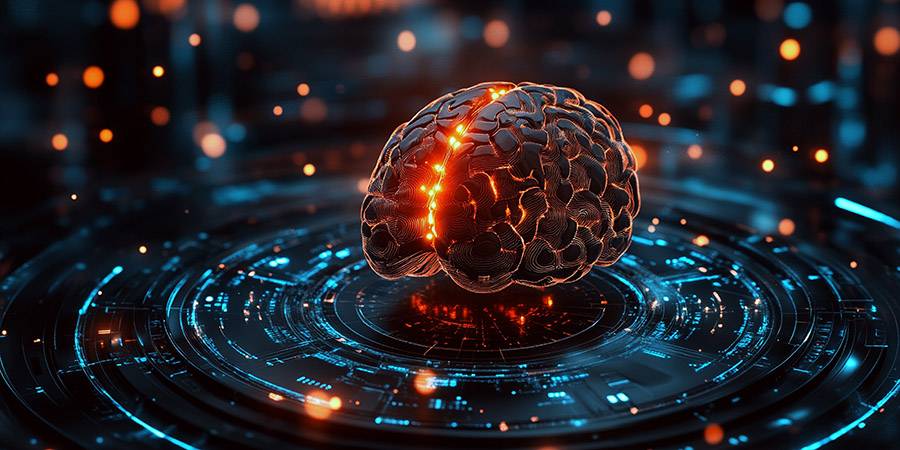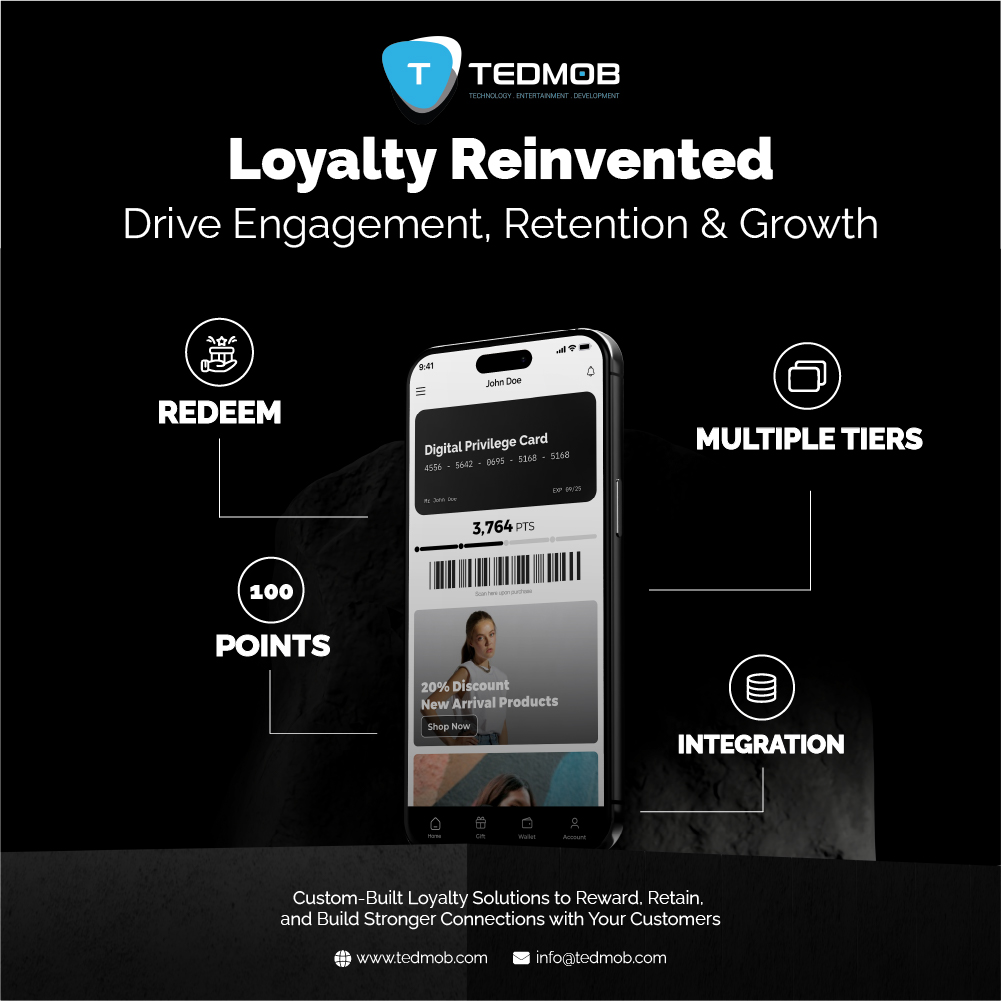Today’s digital era represents a paradigm shift in how we interact with the world; technology is increasingly blending with human lives.
The spike in popularity of artificial intelligence (AI) in recent years has accelerated its development dramatically, transforming it from a theoretical concept to a pervasive reality.
As Guillaume Boudin, CEO, Sofrecom Group, aptly stated, “The exponential growth of artificial intelligence is transforming consumer and business-to-business (B2B) uses cases.”
AI’s rapid transformation has led to the advent of ambient invisible intelligence (AII), an intelligent system that can sense, analyze, and execute without unequivocal user commands. According to Mordor Intelligence, the ambient intelligence market is projected to leap from USD 123.28 billion in 2025 to USD 238.83 billion by 2030, growing at a compound annual growth rate (CAGR) of 14.14%.
As we navigate the increasingly interconnected world, AII is another frontier of AI technology bound to shape the future of smart environments and human convenience.
Latest: UAE Among Top Global Emerging AI Contenders
Traditional AI vs Ambient Invisible Intelligence
In the pursuit of enhancing the design of everyday tech, AII is making devices more intelligent by acting without direct human instruction.
Demanding constant human oversight, traditional AI emerged with limitations, specializing in predefined tasks. It requires explicit input, such as voice commands, text prompts, or app controls to operate. Meanwhile, ambient intelligence (AmI) marks a substantial shift, transforming into an active participant, anticipating needs, and adjusting lighting or temperatures based on subtle cues.
Unlike AmI systems that still require visible interfaces, such as smartphone alerts, voice prompts, or app-based controls, AII operates autonomously and anticipates needs without human intrusion, indicating a significant leap from constant user participation. This intelligent system gathers data and executes actions seamlessly in the background, personalizing user experiences (UX) by integrating AI, machine learning (ML), and Internet of Things (IoT). It relies on sensors, advanced data analytics, and context-aware computing to create environments that adapt in real time. AII’s sensor networks collect data through movement, heat, light, and sound, and integrate it into systems.
AII utilizes advanced chips for sensors and communication and focuses on bluetooth low energy (BLE) and next-generation wireless services, such as 5G. Its core feature lies in its invisibility, embedding itself into environments where users rarely notice its presence.
Read About the Industries Set to Benefit from the Rise of Multimodal AI
Navigating the Challenges of AII
While AII promises to simplify daily lives, its adoption raises various concerns. From facial recognition to environmental pattern monitoring, AII’s constant reliance on data collection requires stringent measures to protect user privacy.
During LEAP 2025, Abdullah Mohammad Khorami, Chief Business Officer at Etihad Salam Telecom Company, elaborated on this, noting that, “Given that AI systems process vast quantities of data, safeguarding user privacy and ensuring the protection of data is crucial.”
Ethical considerations encompassing consent, data collection, and usage policies are fundamental to gain trust and encourage wider adoption of AI technologies.
The Information Systems Audit and Control Association (ISACA) highlighted that facial recognition technology (FRT) poses substantial privacy, security, and vulnerability issues, including a lack of transparency and consent, unencrypted facial data, technical liabilities, and inaccuracy.
AI bias remains a persistent threat, particularly when flawed data spreads inequality. Notably, 77% of companies that tested their AI systems found that the systems they’d created were biased. It is important to note that AI bias does not happen by accident, but rather exists in the training set. Beyond this, AII’s environmental footprint poses another challenge as its sensors constantly consume energy.
Also Read: Manus: A Step Forward in Artificial General Intelligence?
AII Applications: Driving Interconnected and Intelligent Environments
AII is revolutionizing daily life, embedding itself particularly in home automation. In this environment, traditional smart thermostats analyze preset schedules, while AII-powered systems such as ecobee’s smart thermostats (SmartSensor) evaluate occupancy patterns and weather forecasts to preheat or precool homes before residents arrive.
Similarly, Philips Hue’s motion sensor lighting eliminates the need to use manual switches by triggering smart lights to turn on or off, while TP-Link’s Tapo smart plug automatically cuts power to prevent overcharging, conserve energy, and protect devices.
Digital assistant, Alexa, utilizes sound cues and visuals (voice chrome) to initiate smart home interaction without user prompts. Recent advancements have enabled Alexa to act on “hunches”, making adjustments based on usage habits.
Within the health-related ecosystem, WELOV, the world’s first matter-smart air purifier, syncs with Apple Health to adjust fan levels according to sleep patterns. Known for creating the first health-enhanced wearable watch, Withings’s smart watch tracks sleep patterns and heart rates, detects the onset of illnesses by monitoring body temperature fluctuations, and provides health insights without user intervention. Its cardio check-up feature offers users electrocardiogram (ECG) reviews from cardiologists within 24 hours.
In retail, AII is used by Amazon Go Stores in its checkout-free shopping feature, which utilizes sensors to track purchases automatically. The smart manufacturing sector is also leveraging predictive maintenance to prevent machinery breakdowns, with smart tags optimizing inventory management in real time.
Furthermore, smart cities benefit significantly from AII. Sensors monitor traffic to optimize signal timings and reduce congestion, while tracking air quality, noise levels, and energy usage to improve quality of life. That being said, Marc Veelenturf, CEO of Middle East and Turkey at Atos, pointed out, “To build smart cities and enable hyper-connected communities, one of the key challenges is managing large amounts of data from various sources and integrating multiple technologies and systems into a cohesive and interoperable ecosystem.”
To combat this, Zain KSA is utilizing Atos’s Smart Destination platform to facilitate smart city initiatives and improve the quality of life for residents across the Kingdom. The Smart Destination platform provides a centralized data management system that allows for easy integration and analysis of data from multiple sources.
Regionally, North America is witnessing a growing adoption of AmI- and AII-powered smart home technologies, such as smart thermostats, lighting systems, security cameras, and voice-activated assistants in their homes. In contrast, Europe is advancing its smart city and urban management initiatives, integrating advanced AI in traffic, transportation, and waste systems. Fortune Business Insights also predicted that the Asia Pacific will display the highest CAGR, driven by rapid smart city developments, particularly in China, Japan, South Korea, and Singapore.
Meanwhile, the Middle East and Africa (MEA) is expected to remain at the forefront of AI-adopting regions, driven by the rapid developments of Middle Eastern countries, such as the United Arab Emirates, Saudi Arabia, and Qatar, in the AI field. For instance, the UAE has launched various AI-driven governance, transportation, and public safety projects to advance its vision of an intelligent future. The recent launch of Dubai’s State of AI Report and the UAE’s AI Strategy 2031 further exemplifies the nation’s goal to be at the forefront of the global technological race.
Furthermore, H.H. Sheikh Khaled bin Mohamed bin Zayed Al Nahyan, Crown Prince of Abu Dhabi and Chairman of Abu Dhabi Executive Council, has issued a resolution and intends to establish the Smart and Autonomous Systems Council (SASC). The council aims to advance a supportive and attractive environment for the development and use of smart and autonomous systems in Abu Dhabi.
Read About Why Qatar Might Be the Next AI Superpower
The Trust-Convenience Paradox
As technology advances, it not only assists but weaves into the fabric of human lives, silently anticipating needs.
AI has evolved as an invisible architect of modern lives, acting autonomously and reshaping how we interact in the digital era.
However, AII’s seamless integration demands constant data collection that may be at risk if any system goes rogue. The growing reliance on AI-driven systems is making users question how much personal autonomy they are willing to surrender for convenience.
To what extent will users trust technology to monitor their behaviors and routines?
More on Artificial Intelligence:
AI to Double Data Center Electricity Consumption by 2030
High Tech, High Trust: Saudi and UAE Among World’s Most AI-Comfortable Nations










